Macaronesia
Things to DO
Madeira
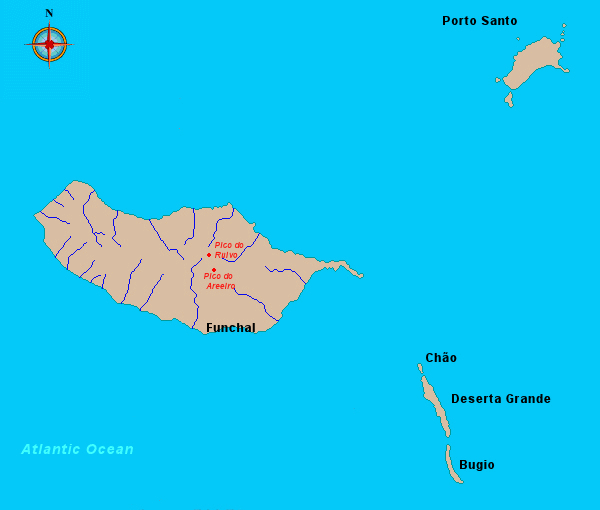
The Portuguese archipelago that includes the island of Madeira, Porto santo and Desertas,is located in
the mid-Atlantic ocean, about 600km west of the Morocco coast.
Madeira Island is often called the floating garden. Public parks full of flowers are everywhere. There
are also many garden visitor attractions. The volcanic scenery is stunning. The mountain village of Monte gives
fantastic panoramic views of Madeira's capital city, Funchal. The more adventurous can travel further afield
and climbing the peaks above the clouds.
Porto Santo is one long beach with a bit of an island attached. Along its nine kilometres of soft white
sands, you’ll find just a handful of hotels and restaurants, making Porto Santo one of the last ‘undiscovered’
resorts in Europe.
From the Funchal area you can see three distant islands to the southeast, often behind a thin shimmer of haze.
These are the mysterious Ilhas Desertas. The name means 'the deserted ones' or the Deserted Islands,
and this is due to the lack of permanent water and the consequent barrenness of the soil.
Funchal
Dramatically sited overlooking the Atlantic, the island's capital Funchal, sits in a natural
amphitheatre surrounded by mountains: head any distance inland and you'll be climbing steeply uphill.
The natural magnet for visitors is the extensive seafront, Avenida do Mar. At one end is the marina,
the departure point for boat trips around the island and buzzing with restaurants and cafés. Inland is the
historic centre, a series of mosaicpaved streets lined with shops, museums and subtropical gardens.
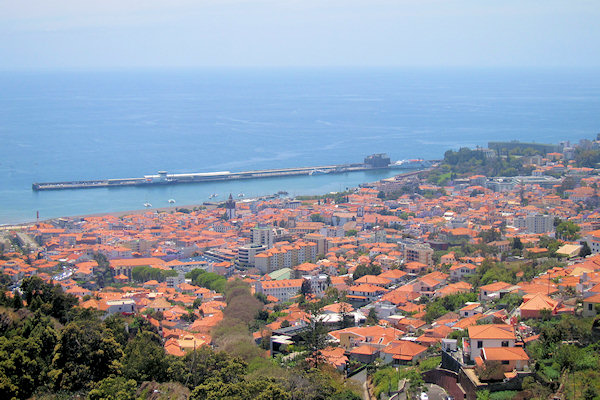 |
|||||
With its distinctive white facade and single tower, the Palácio de São Lourenço is one
of Funchal's most impressive and historic buildings.
In the beginning of its history the it served as residence for many captains and governors of the island and
then it became gradually a national residential palace.
It was classified National Monument in August 1943, now serving as residence for the Prime Minister of the
Autonomous Region and the Military Command.
The fortress was built in the years 1529 to 1540. In the following years until up to the 19th century, many
improvements, alterations and extensions to the original primitive construction were made so that the Palácio
that has survived until today, belongs to one of the best-preserved examples of Portuguese fortification from
the 16th and 17th century.
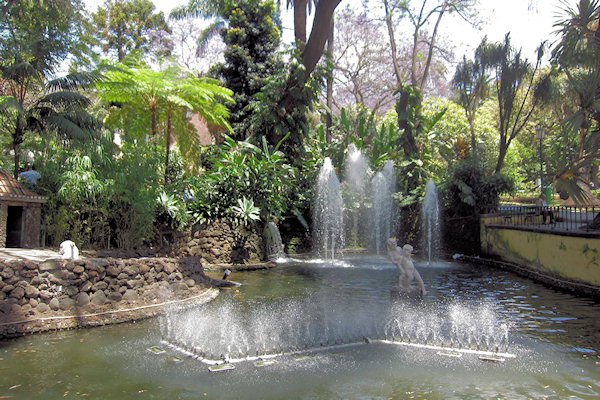 |
|||||
Praça do Municipio is a leisure area with shadow providing trees, a small pond featuring ducks and
black or white swans, a café and an amphitheatre where often entertaining and cultural events take place.
Funchal's cathedral, the Sé was built between 1485 and 1514. Its dark basalt-stone exterior and narrow
windows are typical of Southern European Gothic architecture. The most striking feature inside is the geometric
patterned wood and ivory ceiling, of unmistakable Moorish inspiration and somewhat at odds with the heavy
Baroque decoration imposed on the rest of the interior.
Set on a little rocky outcrop overlooking the sea is the Forte de São Tiago with its distinctive ochre
walls. Built in 1614 it was enlarged in 1767 and exclusively served military purposes until 1992, in which
Madeira’s Regional Government decided to use it for cultural activities.
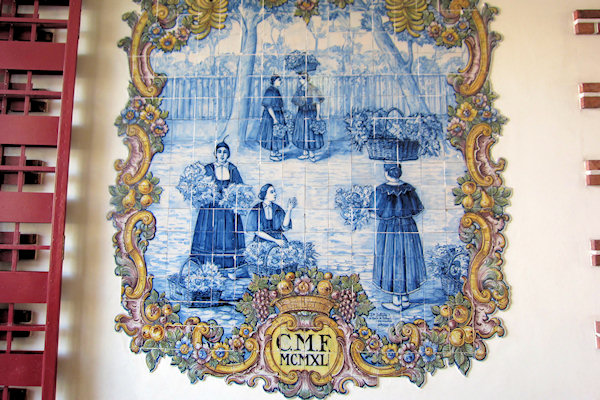 |
|||||
Funchal's vibrant main market, the Mercado dos Lavradores, sells a colourful array of fish,
exotic fruits and local crafts. Much of its appeal lies by the tiers of arcades, thronged with shoppers
looking down on the activity in the central courtyard below. The lower tier contains counter after counter
scabbard fish, tuna steaks and other weird-looking Atlantic fish. The main ground-floor area is a medley of
stalls selling vegetables and exotic fruit.
One of the premier tourist attractions of Funchal is the cable car ride up to Monte. As long as you
have a head for heights, then travelling up to Monte by cable car will be near the top on your list of things
to do. Not only will the journey take you up to the delights of Monte - which is a must visit destination for
any visitor to Madeira - but, in doing so, you will also be treated to some wonderful views of Funchal and its
harbour.
On top, there is a small statue of Saint Barbara, wich is known as the patron saint of the artillery
men, miners, firemen and all those who work with explosives. She was placed there to protect the workers
that handled explosive material used in the construction of the docking station.
Jardin Botânico
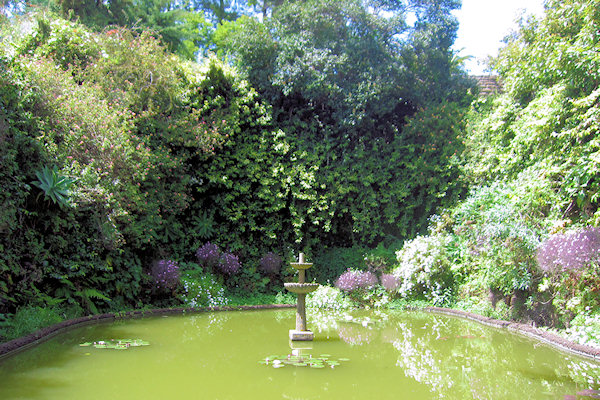 |
|||||
Since the 17th century Madeira Island had been waiting for a botanical garden, a dream that came true in
1960. Located 3 km from the centre of Funchal at Quinta do Bom Sucesso – a private estate belonging to the
Reid’s family – where the climatic conditions are much in favour of exuberant vegetation.
The Botanical Garden boasts harmonious forms, contrasting colours and more than 2000 plants. It is
government owned and, apart from being a beautiful place of leisure, it also serves as a Science and Culture
Centre.
Throughout the gardens visitors can find the plants labelled with their scientific names, common name and
origin.
At the foot of the park lies the Loiro Park, that Park gathers some of the most exotic and rare
birds.
Cockatoos and ‘Loricos’ (a parrot species) from the Asiatic tropical islands, Australian parakeets and
dwarf parrots are only some of the many bird species that you can find in this park.
Nossa Senhora do Monte
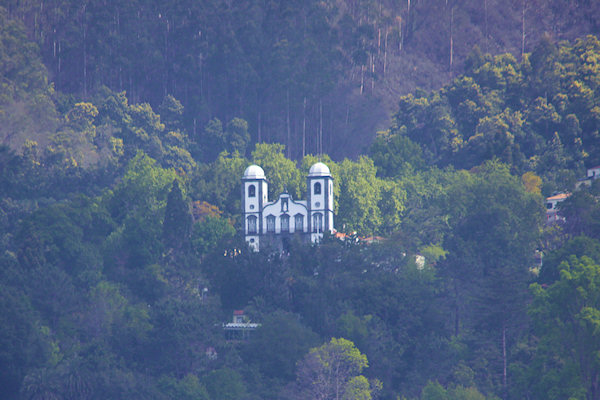 |
|||||
This twin-towered Nossa Senhora do Monte (Our Lady of the Mountain) is the island's most important
church and stands on the site of one of Madeira's first chapels, built in 1470 by adam Gonçalves Ferreira, one
of a pair twins who were the first children born on the island.
The original chapel was levelled in the 1748 eartquake and was replace in 1818 by the current baroque
structure, an attractive building with low-hanging chandeliers and a painted ceiling.
The altar displays a particulary revered statue of the Virgin, found by a shepherdess in the fifteenth
century; azulejos panals on the fron of the church depict the moment of discovery.
The church is the final resting place of Emperor Karl I of Austria and King of Hungary who died on 1 april 1922.
Desertas
In 1990 the Desertas became a Nature Reserve, comprising the islands themselves and the surrounding sea to a depth of 100 metres. The reserve is divided into two protected zones of which the southern half of Deserta Grande and Bugio are strictly forbidden to visitors even by boat within the 100m barometric line.
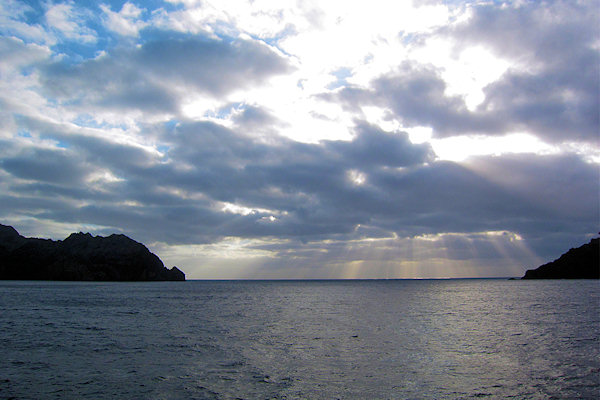 |
|||||
On the northern half of the reserve boats may come close to shore, but nobody is allowed above the high
water mark. On Deserta Grande there is a permanent research station with two wardens, who are the only human inhabitants of the islands today.
On the islands there are only 15 species of breeding birds, eight of them being seabirds. Fea's Petrel breeds
only on Bugio with 150-200 pairs. They nest in burrows and it would appear that there is some competition with
rabbits which sometimes invade the burrows and upset the nesting birds. It has been suggested that rabbits be
removed form the island as a protective measure for the birds.
In addition the following species breed on the islands, the approximate numbers of pairs in brackets: Cory's
Shearwater (>1500), Little Shearwater (>300), Bulwer's Petrel (>1500), Madeiran Storm-petrel (>1000), and
small numbers of Yellow-legged Gull, Roseate and Common Tern.
The land birds that breed on the islands are: Buzzard, Kestrel, Rock/Feral Dove, Plain Swift, Berthelot's Pipit,
Canary and Linnet.
Among biologists these islands are well known for the very small colony of Monk Seals, which was the main
reason that the Desertas became a nature reserve. The population has increased slowly since 1998 when there
were only eight left, to more then 20 today. If you see one you are among the few lucky ones!